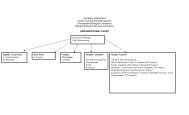SEDIMENT SIZE ANALYSIS - Nutrient Analytical Services Laboratory
SEDIMENT SIZE ANALYSIS - Nutrient Analytical Services Laboratory
SEDIMENT SIZE ANALYSIS - Nutrient Analytical Services Laboratory
Create successful ePaper yourself
Turn your PDF publications into a flip-book with our unique Google optimized e-Paper software.
<strong>SEDIMENT</strong> <strong>SIZE</strong> <strong>ANALYSIS</strong><br />
NUTRIENT ANALYTICAL SERVICES<br />
CHESAPEAKE BIOLOGICAL LABORATORY<br />
FEBRUARY 2011<br />
Method Description: This method uses sodium hexametaphosphate as a deflocculant<br />
(breaks up the fines) and Ro-tap sieve technique to identify sediment<br />
size classes of 2 mm through 63 microns. It does not differentiate between sizes<br />
(phi) less than 63 microns.<br />
Reagents: 0.5% Sodium hexametaphosphate (SHMP). Dissolve 5.0 g Sodium<br />
hexametaphosphate in 1 Liter deionized water.<br />
Equipment and Supplies:<br />
Aluminum foil weighing pans (~15X20 cm)<br />
47 mm GF/F pads, preweighed to 0.0001 g<br />
Plastic Weigh boats (13X13 cm)<br />
Four place analytical balance<br />
Drying oven capable of maintaining 90 degrees C +/- 5 degrees C<br />
600 mL beakers<br />
Ro-tap Sieve<br />
Sieves (21 cm diameter) 63 micron-2mm<br />
Method:<br />
1. Sediment samples usually come frozen in 8 oz glass jars.<br />
2. Thaw the samples overnight (Six samples is a good quantity to work on at one<br />
time).<br />
3. Pre weigh aluminum foil weighing pans<br />
4. Place the entire sample (at least 500 g wet weight) into a 600 mL beaker.<br />
5. Add 0.5% sodium hexametaphosphate (SHMP, 5.0 g/L deionized water) until<br />
the sample is completely covered.<br />
6. Mix with glass stir rod and wait 5 minutes.<br />
7. Carefully decant fluid (it will be very cloudy to begin with) through 63 micron<br />
mesh and collect it in a container. Half gallon plastic milk jugs work well. By<br />
carefully decanting the fluid, there will be a negligible amount of sand remaining<br />
on the 63 micron mesh.
8. Repeat steps 4-6 until the fluid is clear. This may take up to several liters of<br />
SHMP solution depending on the type of sediment.<br />
9. Rinse what remains in the beaker thoroughly with deionized water.<br />
10. Remove contents in the beaker to the pre-weighed aluminum foil dish and dry<br />
at 80 degrees C.<br />
To Determine The Amount of Fines<br />
Measure the amount of SHMP used for a specific sample and<br />
record on the bench sheet.<br />
Filter at least two replicate aliquots for TSS measurements/sample<br />
on a pre weighed 47 mm GF/F filter. Dry and weigh as per a normal TSS<br />
measurement. Record on bench sheet.<br />
Based on the TSS result (number of grams material for a given<br />
volume), determine the amount of fine material for the entire sample.<br />
Enter your work on the bench sheet.<br />
Ro-tap Sieve Method<br />
1. Record the dry weight of the sample.<br />
2. Place the entire sample onto the first (most coarse) sieve.<br />
3. Ro-tap for 15 minutes. Sieve sizes routinely used are 2.0 mm, 0.5 mm,<br />
0.25 mm, 125 micron and 60 micron and the method allows for the<br />
flexibility to add or subtract sieves depending on the project requirements.<br />
4. Transfer material that is retained on each sieve to a pre-weighed large<br />
plastic weighing dish. Use a tooth brush to loosen as much material as<br />
possible. Record the sample+weighing dish weight on the bench sheet.<br />
Calculation<br />
Subtract the weigh dish weight from the total amount weighed for that sieved<br />
fraction.<br />
Add the amount determined from the SHMP procedure to the last fraction<br />
(







